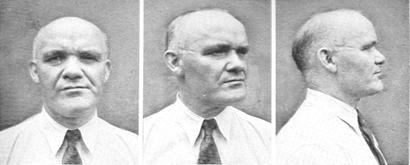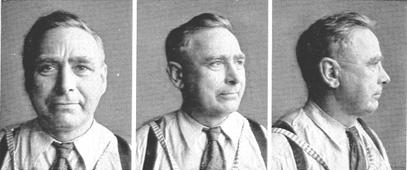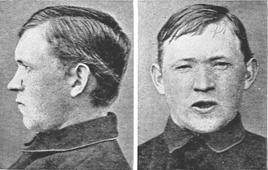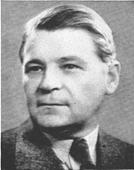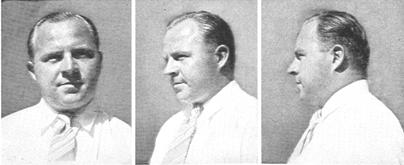|
(Photographic Supplement, Plate 5)
In the same districts of southern Sweden where Brünn survivors are found,
and across the Skaggerrak in Jutland, are found brachycephalic Upper
Palaeolithic survivors, equally unreduced in head and body size, equally if
not more lateral in bodily build.
FIG. 2 (3 views). A Swede from Göteborg, representing more nearly the mean of the Borreby race as it is found today. Both this man and #1 are golden blond in hair color; the Borreby group seems to run lighter-haired than the Brünn.
FIG.3 (2 views, Bryn and Schreiner; Die Somatologie der Norweger, Table 44, Fig. 121). This individual, while less brachycephalic than many of his compatriots, especially those in the Jaeren district, shows an essential affiliation to the Borreby race. The apparent facial flatness and the formation of the region of the nasal tip and the upper lip look "Irish"; this is an Upper Palaeolithic facial condition common both to Scandinavians and to British of Upper Palaeolithic type.
FIG.4 (1 View, Gudmundur Kamban, author of I See a Wondrous Land, G. P. Putnam & Sons, N. Y.). A prominent Icelandic author, who presents the same facial features and belongs to the general Borreby racial type. Iceland was settled mainly from the coastal regions of Norway in which the Borreby race is prevalent; an important Irish increment may have added a similar racial element.
FIG. 5 (3 views). A Finnish example of the Borreby race. This Finn is more brachycephalic than most Borreby men; however his lateral bodily build, and his extreme breadth of face and mandible show that he is a trans-Baltic member.
|
